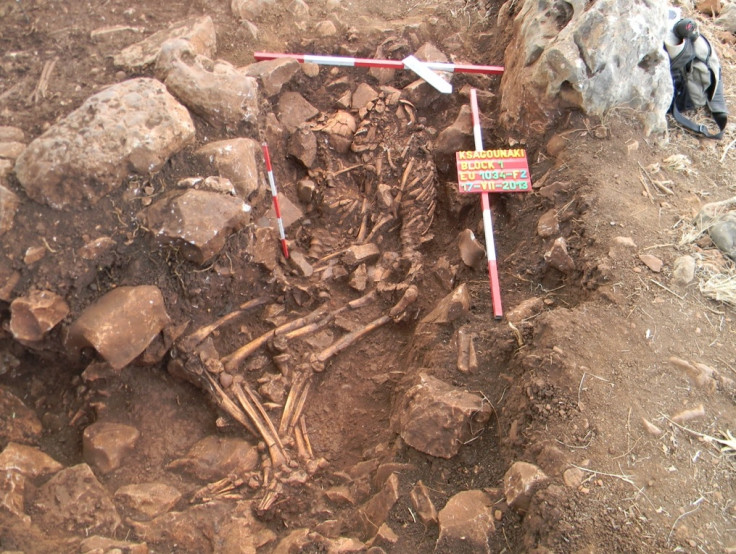Greece: Ancient town and burial site discovered outside entrance to Hades' Alepotrypa Cave

A Neolithic town and burial site has been discovered outside the entrance to the Alepotrypa Cave – the site believed to have inspired the mythical Greek god of the underworld Hades.
Archaeologists working at the Diros Bay site in Greece recently unearthed a Neolithic couple 'spooning' – having been buried side by side in an embrace.
The find made headlines across the globe and researchers have now announced further discoveries at the site, Ksagounaki, including several other burials and the remains of an ancient village dating back over 6,200 years.
Hades' cave of doom
The giant Alepotrypa Cave once housed hundreds of people before it collapsed and killed everyone inside, researchers discovered in 2012.
The cave was discovered in the 1950s and has been the subject of study ever since. The main chamber is about 200ft tall and 330ft wide. It is over three kilometres long and was large enough to have its own lake. Archaeologist Michael Galaty told Live Science: "If you've ever seen 'The Lord of the Rings,' this might make you recall the mines of Moria — the cave is really that impressive."
Artefacts found there dated back about 9,000 years and the cave was used both as a home and a cemetery. Because it was used as a burial site, archaeologist Giorgos Papathanassopoulos said the cave could have been seen as the entrance to the underworld by those living there.
Galaty said: "You can easily see why Giorgos would make that hypothesis. The cave really does recall the underworld, Hades and the River Styx. Alepotrypa existed right before the Bronze Age in Mycenaean Greece, so we're kind of seeing the beginnings of things that produced the age of heroes in Greece.
'You have to imagine the place torchlit, filled with people lighting bonfires and burying the dead. The burial sites and rituals that took place really do give the cave an underworld feel. It's like Hades, complete with its own River Styx."
The cave collapsed 5,000 years ago – possibly due to an earthquake - burying everyone inside alive.
Researchers from the Field Museum said the site was once a busy town and burial complex dating to the Neolithic and Bronze Age, suggesting the bay was an importance centre in ancient times.
Outside the entrance to the Alepotrypa Cave, archaeologists found Neolithic buildings from between 4200-3800 BCE. They also found adult and infant burials, suggesting the sites were part of one huge settlement and ritual complex.
William Parkinson, from the Field Museum, said the biggest surprise was a Mycenaean-period (1600–1100 BCE) burial structure, filled with the bones of dozens of individuals Late Bronze Age painted pottery, exotic stone beads, ivory, and a Mycenaean dagger made of bronze.
Researchers have known the cave was used for domestic and ritual purposes throughout the Neolithic period, but new research has shown it was an important area during the final Neolithic period – a time when Greece was known for its wide trading networks and the introduction of copper tools, beckoning in the Bronze Age.
From the findings, experts believe the megalithic buildings constructed there during the Neolithic Age could have attracted the Mycenaeans over 2,000 years after they were abandoned.
© Copyright IBTimes 2024. All rights reserved.







